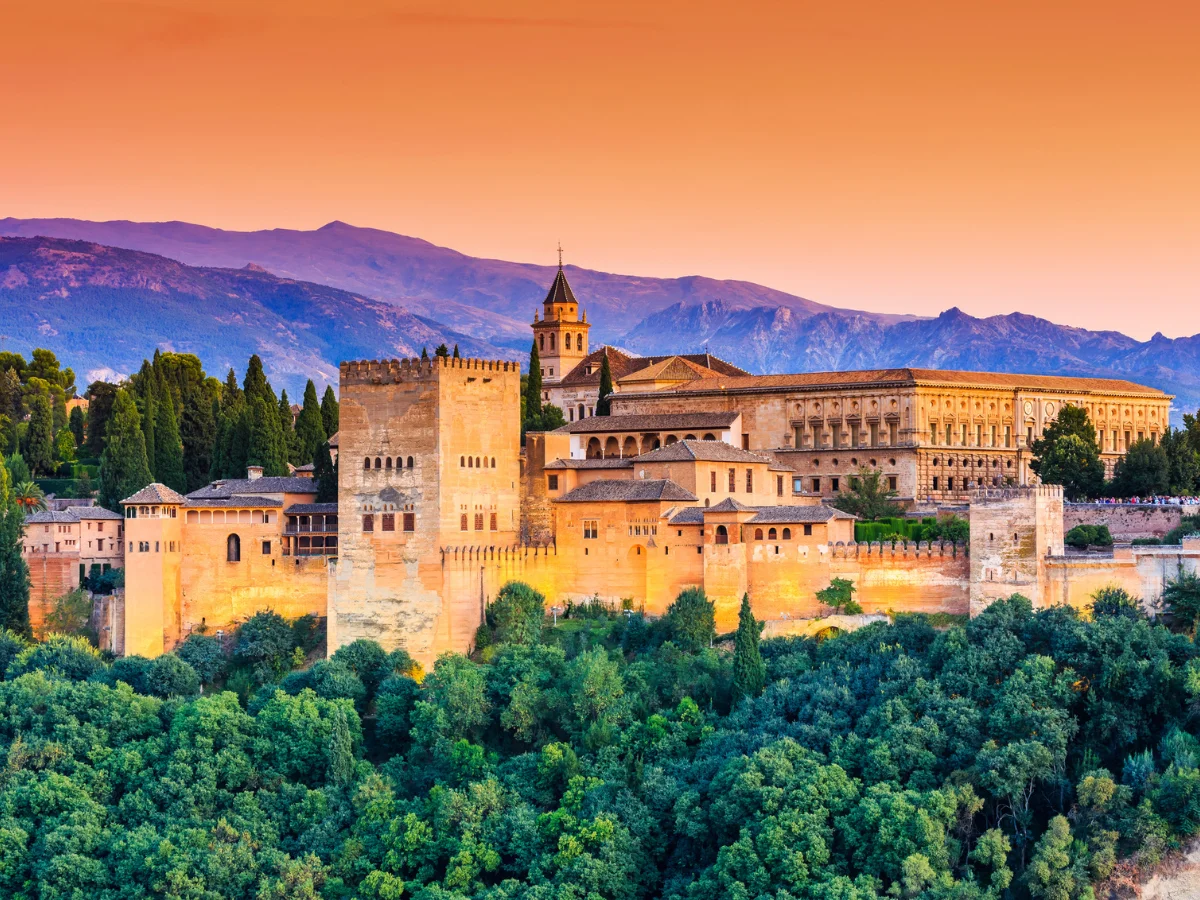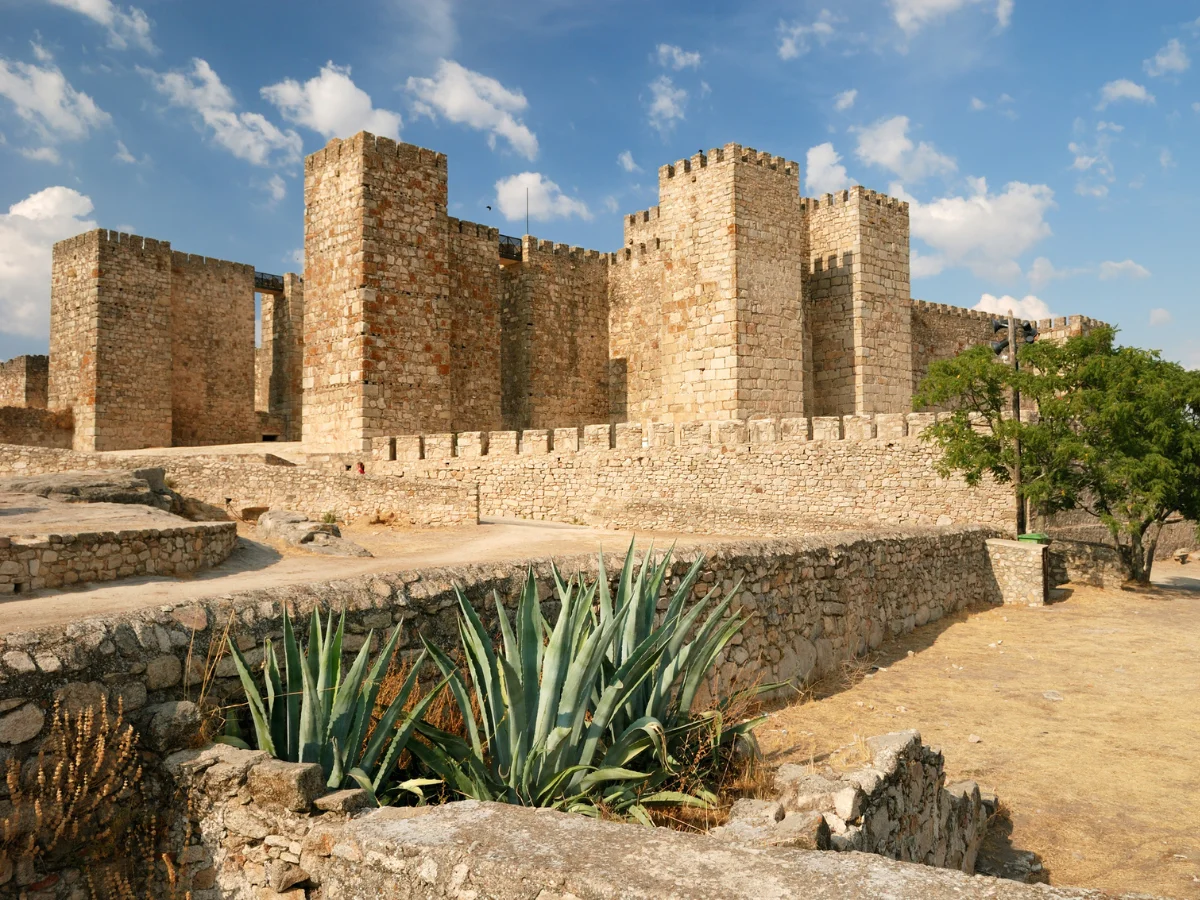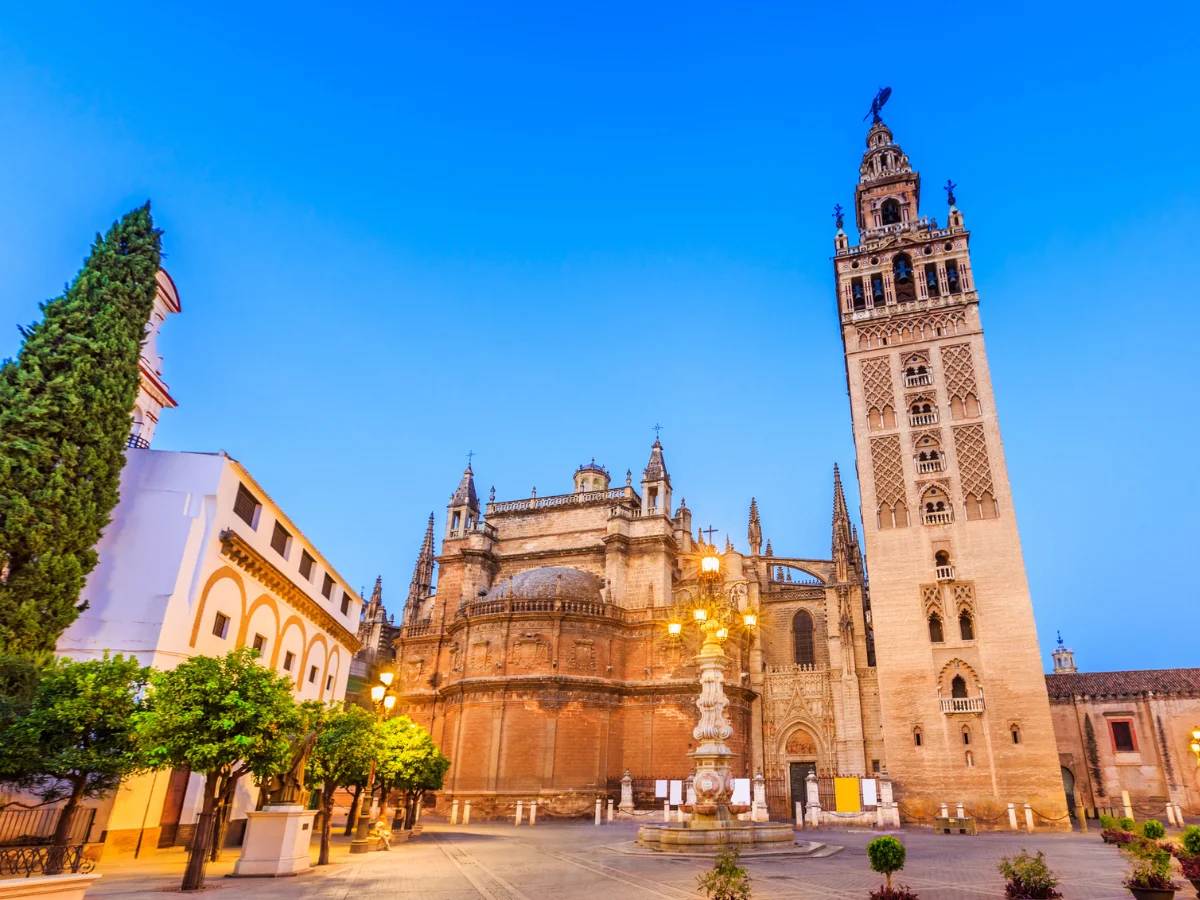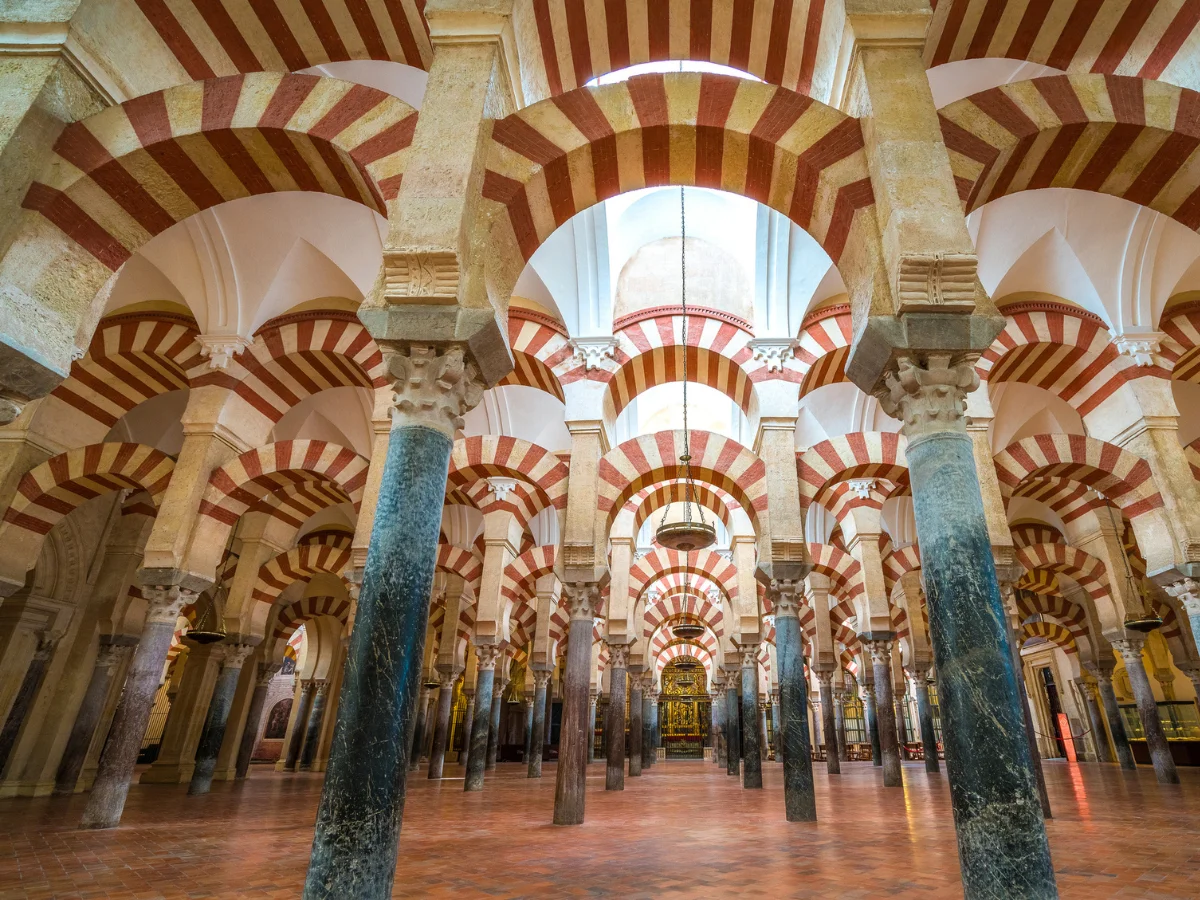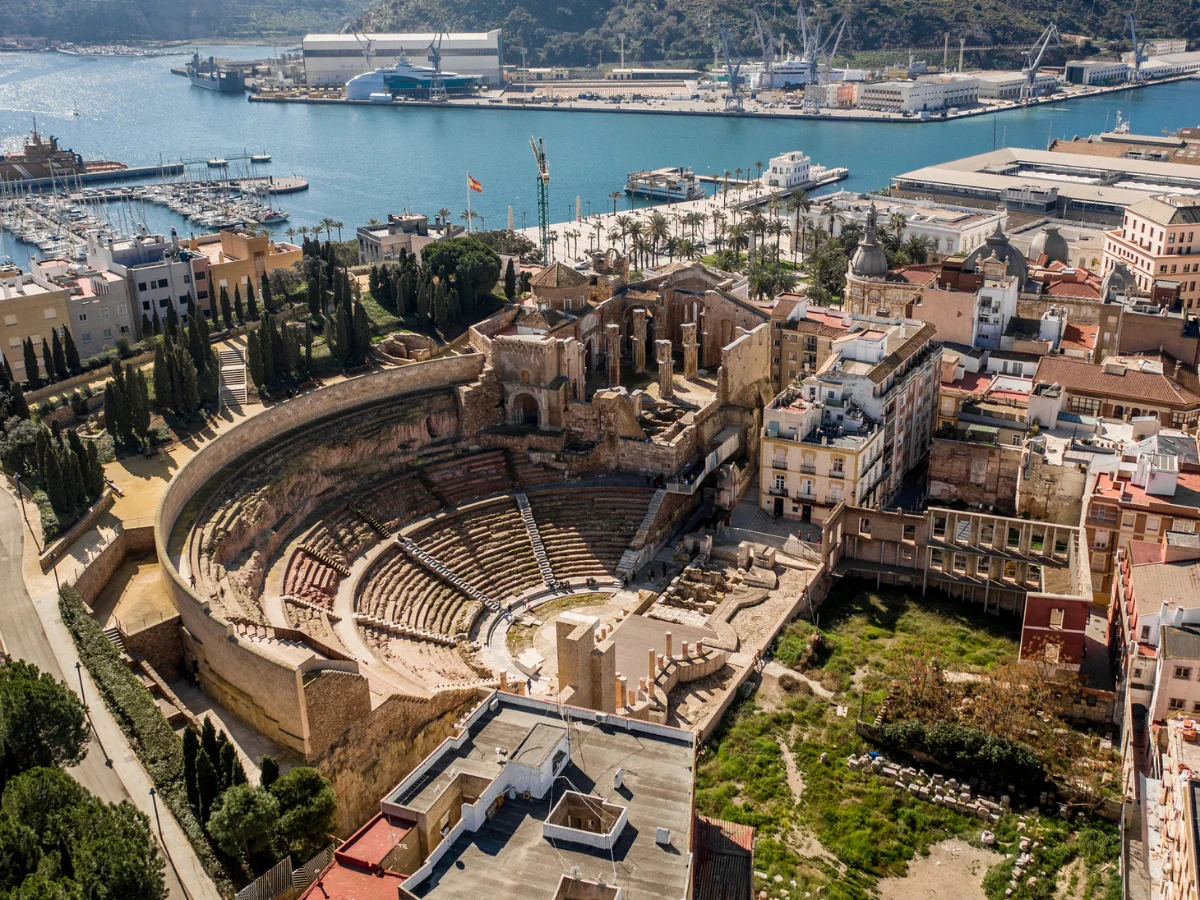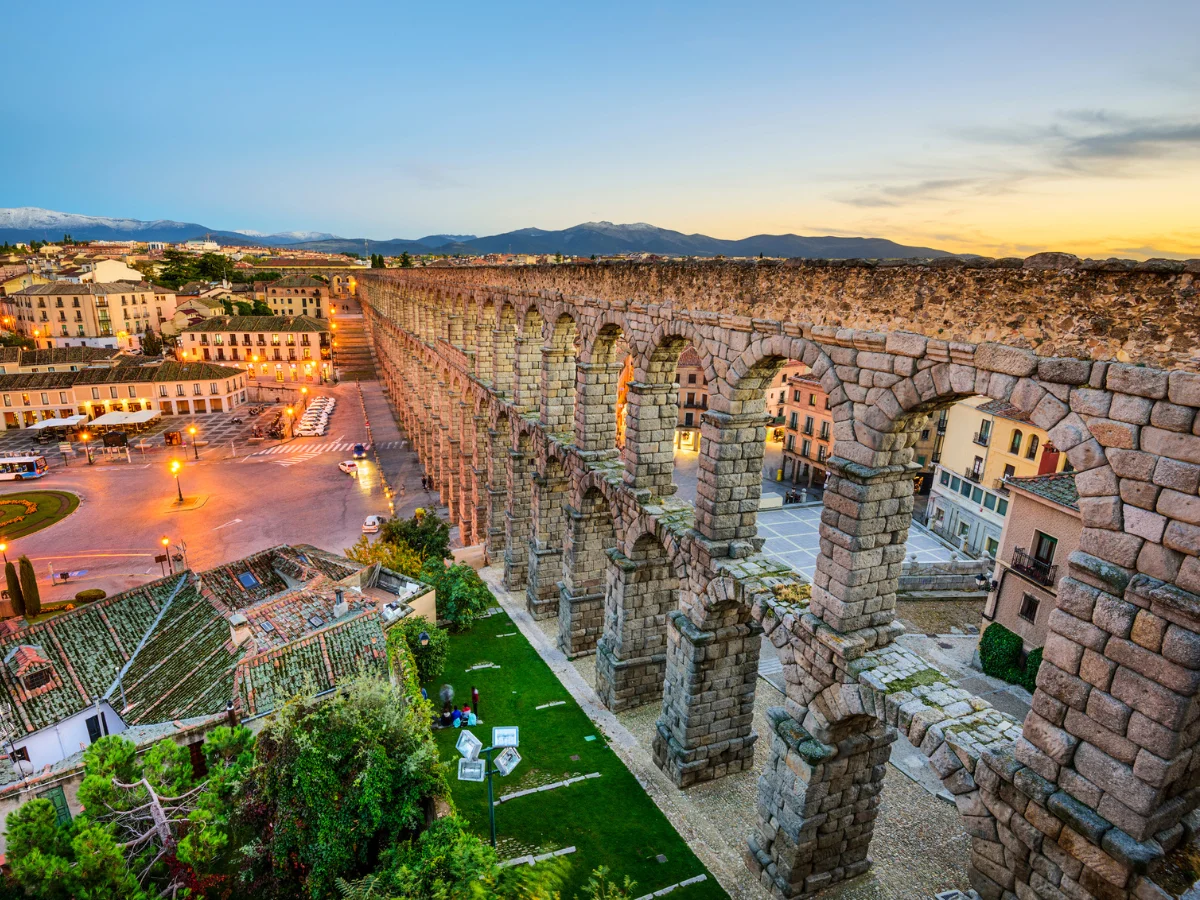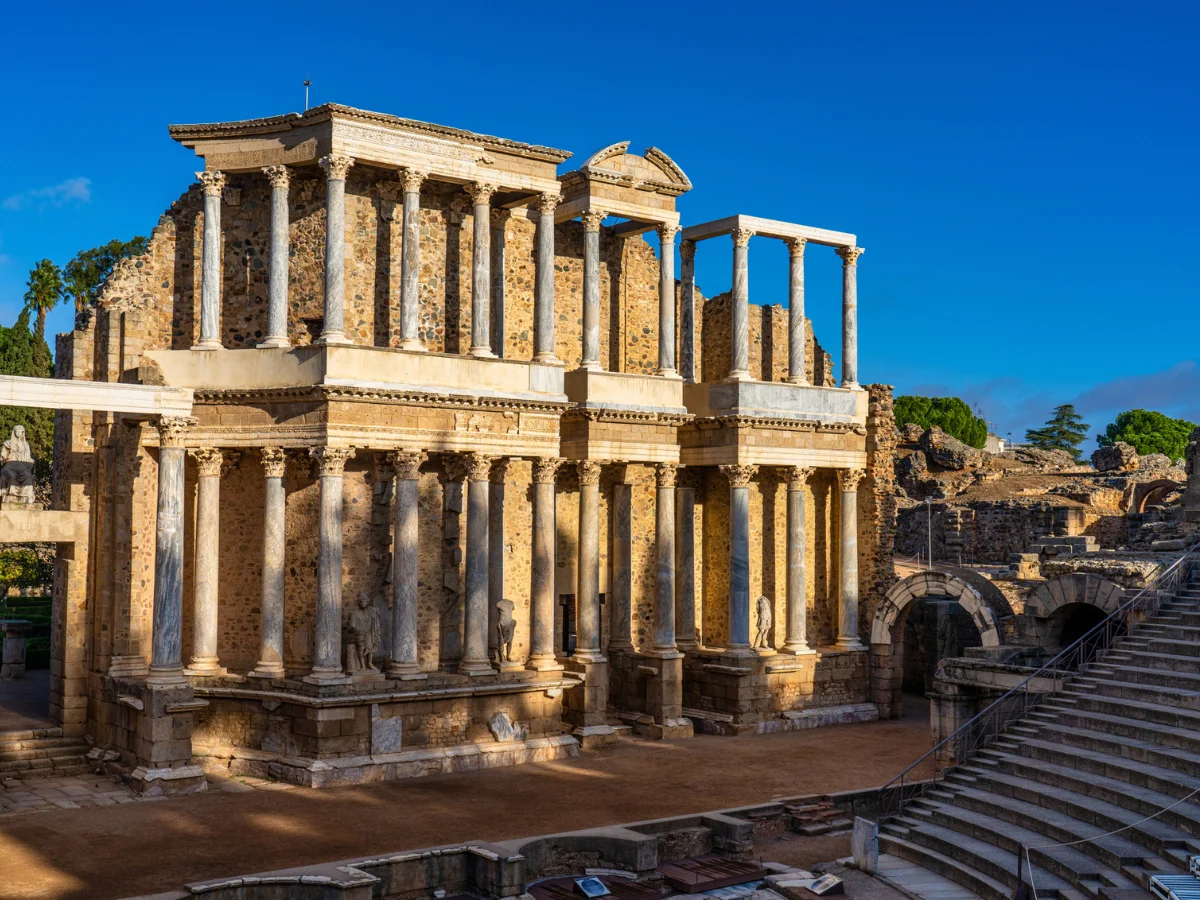The Muslim kingdoms in ancient Spain
The Muslim kingdoms in ancient Spain, spanning from the Umayyad Emirate of Cordoba to the Nasrid Kingdom of Granada, left a profound legacy. They flourished culturally and intellectually, with Cordoba becoming a center of learning. However, political fragmentation during the Taifas period weakened them. The Almoravid and Almohad dynasties intervened but eventually succumbed to Christian advances. Granada stood as the last bastion of Muslim power until 1492 when it fell.
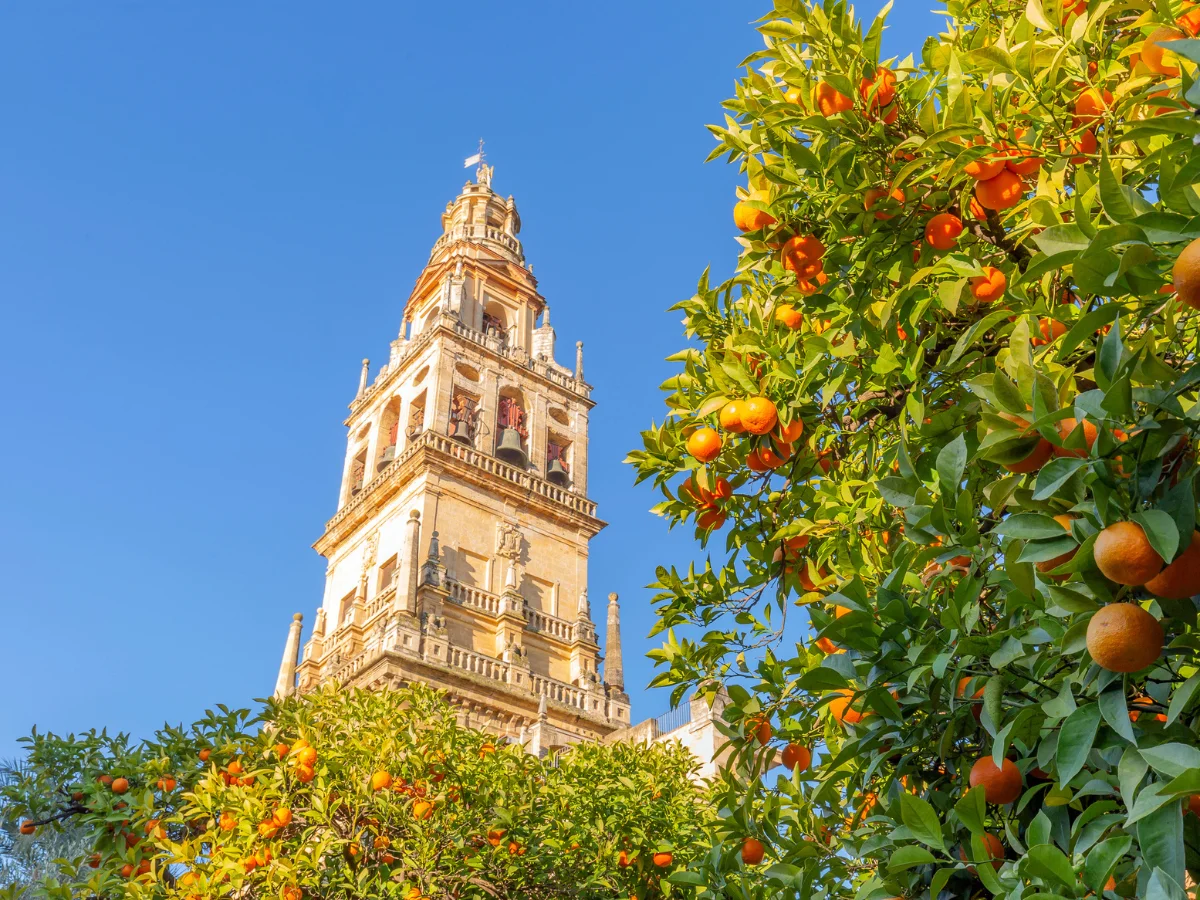
The Muslim kingdoms in ancient Spain
Spain’s history is rich with the influence of various Muslim caliphates and kingdoms that left an indelible mark on its culture, architecture, and society. From the Caliphate of Cordoba to the Nasrid Kingdom of Granada, each era brought its own unique dynamics and contributions to the Iberian Peninsula.
Al-Andalus
Al-Andalus was the Muslim-ruled region of Spain, founded in 711 AD by Tariq ibn Ziyad, a Berber general. The region flourished under Islamic rule. Cities like Córdoba and Granada became centers of learning and culture. Art, science, and architecture thrived. Meanwhile, Christians, Jews, and Muslims lived together, exchanging ideas.
The Caliphate of Cordoba
The Caliphate of Cordoba, established in 929 AD, was one of the most prosperous and culturally vibrant periods in Spanish history. Under the rule of Abd-ar-Rahman III, Cordoba became a center of learning and innovation, boasting libraries, universities, and architectural marvels like the Great Mosque of Cordoba. The caliphate’s influence extended across much of Spain, with its capital city serving as a beacon of Islamic civilization in Europe.
The Taifa Kingdoms
After the collapse of the Caliphate of Cordoba, Spain fragmented into smaller taifa kingdoms, each ruled by its own emir or king. These kingdoms, which emerged in the 11th century, were characterized by internal rivalries and constant warfare as local rulers vied for power and influence. Despite their political instability, the taifa kingdoms fostered a flourishing of art, literature, and architecture, with cities like Seville, Toledo, and Zaragoza becoming centers of cultural exchange and innovation.
The Nasrid Kingdom of Granada
Following the decline of the Caliphate of Cordoba, the Nasrid Kingdom of Granada emerged as the last Muslim stronghold in Spain. Founded in 1230 AD by Muhammad I, the kingdom thrived for over two centuries, showcasing stunning examples of Islamic architecture such as the Alhambra palace complex. Despite facing increasing pressure from Christian kingdoms, Granada maintained its independence until the late 15th century, leaving behind a legacy of art, poetry, and scientific advancements.
The Almoravid and Almohad Dynasties
During the 11th and 12th centuries, Spain witnessed the rise of the Almoravid and Almohad dynasties, which originated from North Africa. The Almoravids, led by Yusuf ibn Tashfin, intervened in Spain to halt the Christian Reconquista and restore order to the taifa kingdoms. Similarly, the Almohads, under the leadership of Abd al-Mu’min, sought to unify Muslim territories and counter Christian advances. While both dynasties exerted considerable influence in Spain, their rule eventually waned as internal conflicts and external pressures weakened their grip on the peninsula.
Legacy of Muslim Rule in Spain
The legacy of Muslim rule in Spain is evident in the country’s language, architecture, cuisine, and customs. Arabic words permeate the Spanish language, reflecting centuries of cultural exchange and linguistic assimilation. Architectural marvels like the Alhambra, the Great Mosque of Cordoba, and the Alcazar of Seville stand as testament to the ingenuity and creativity of Muslim artisans and builders. Additionally, Spain’s culinary tradition bears the imprint of Moorish influences, with dishes like paella, gazpacho, and albondigas tracing their origins to Islamic cuisine.
Conclusion
The Muslim caliphates and kingdoms that once flourished in Spain left an indelible mark on the country’s history and culture. From the intellectual achievements of the Caliphate of Cordoba to the architectural splendor of the Nasrid Kingdom of Granada, each era contributed to the rich tapestry of Spanish heritage. While the Reconquista ultimately brought an end to Muslim rule in Spain, the legacy of Al-Andalus continues to resonate in the hearts and minds of Spaniards today.
The Muslim kingdoms in ancient Spain
Al-Andalus was a medieval Muslim territory in the Iberian Peninsula, known for its rich culture, science, and coexistence of different religions. It flourished from the 8th to the 15th century, leaving a profound impact on Spanish history.
The Islamic Conquest
In 711 AD, Muslim forces led by Tariq ibn Ziyad crossed the Strait of Gibraltar and defeated the Visigothic kingdom. This marked the beginning of Muslim rule in Spain.
Cultural Flourishing
Al-Andalus became a center of learning, where scholars from various backgrounds contributed to advancements in science, medicine, philosophy, and architecture. It was a beacon of knowledge during Europe’s Dark Ages.
Convivencia
Despite religious differences, Christians, Muslims, and Jews coexisted harmoniously in Al-Andalus, fostering a culture of tolerance and intellectual exchange. This period of convivencia contributed to the flourishing of art, literature, and music.
The Umayyad Dynasty
Cordoba, the capital of Al-Andalus, reached its zenith under the Umayyad Dynasty. It was one of the largest and most sophisticated cities in the world, with paved streets, public baths, and a grand mosque, La Mezquita. The Umayyad dynasty marked a crucial period in the history of both Spain and the Muslim world.
Architecture and Urban Planning
Al-Andalus is renowned for its stunning architecture, blending Islamic, Byzantine, and Visigothic influences. Palaces like the Alhambra in Granada and the Alcazar in Seville showcase intricate geometric designs and lush gardens.
Decline and Reconquista
Internal strife and external pressure from Christian kingdoms gradually weakened Muslim rule in Spain. The Reconquista, a series of Christian campaigns, culminated in the fall of Granada in 1492, ending Muslim rule in the Iberian Peninsula.
Legacy
Despite its eventual demise, Al-Andalus left an indelible mark on Spanish culture and identity. Its contributions to art, science, and philosophy continue to influence the world today, reminding us of the power of diversity and intellectual exchange.
Conclusion
Al-Andalus was a vibrant and cosmopolitan society that thrived for centuries, showcasing the potential of multiculturalism and tolerance. Its legacy serves as a testament to the enduring impact of Muslim civilization on European history.
The Muslim kingdoms in ancient Spain
The Caliphate of Cordoba, spanning from 929 to 1031 AD, marked a glorious chapter in the history of Spain. It emerged as a pinnacle of Islamic civilization, blending art, science, and culture under the enlightened rule of Abd-ar-Rahman III. Cordoba became a beacon of knowledge and prosperity, attracting scholars, traders, and artisans from across the Muslim world.
Abd-ar-Rahman III: The Visionary Leader
Abd-ar-Rahman III, the founder of the Caliphate of Cordoba, was a visionary leader who sought to unify Muslim territories in Spain. He proclaimed himself as the caliph, asserting his authority over the emirates and taifa kingdoms. Under his rule, Cordoba flourished as a center of learning, trade, and innovation, showcasing the best of Islamic civilization.
Cultural Renaissance and Intellectual Exchange
The reign of Abd-ar-Rahman III witnessed a cultural renaissance in Cordoba. The caliphate became a hub of intellectual exchange, with scholars translating ancient Greek, Roman, and Persian texts into Arabic. Libraries, mosques, and universities flourished, fostering advancements in medicine, astronomy, and philosophy. Cordoba’s multicultural society embraced diversity, with Muslims, Christians, and Jews coexisting harmoniously. A famous poet from the Caliphate of Cordoba was Ibn Hazm.
The Great Mosque of Cordoba: Architectural Marvel
One of the crowning achievements of the Caliphate of Cordoba is the Great Mosque of Cordoba. Initially built in the 8th century, it underwent expansions and renovations under Abd-ar-Rahman III, becoming a symbol of Islamic architecture. The mosque’s horseshoe arches, intricate mosaics, and marble columns showcase the beauty and sophistication of Andalusian art. It remains a testament to Cordoba’s cultural and religious significance.
Economic Prosperity and Trade Networks
The Caliphate of Cordoba thrived economically, thanks to its strategic location and vibrant trade networks. Cordoba served as a gateway between the East and West, facilitating the exchange of goods, ideas, and technologies. Its markets bustled with merchants from Africa, Asia, and Europe, trading spices, textiles, and precious metals. The caliphate’s prosperity fueled the development of cities, infrastructure, and public works.
Religious Tolerance and Coexistence
Despite being an Islamic state, the Caliphate of Cordoba embraced religious tolerance and coexistence. Muslims, Christians, and Jews lived and worked together, contributing to Cordoba’s multicultural tapestry. The caliphate’s legal system provided protection and autonomy to religious minorities, allowing them to practice their faith freely. Cordoba’s diversity and inclusivity fostered a spirit of harmony and cooperation among different religious communities.
Challenges and Decline
Despite its achievements, the Caliphate of Cordoba faced internal discord and external pressures. Successive caliphs struggled to maintain unity and control over their vast territory, leading to revolts and rebellions. Rivalries between Berber and Arab factions, as well as incursions by Christian kingdoms from the north, weakened the caliphate’s grip on power. In 1031 AD, the caliphate fragmented into smaller taifa kingdoms, marking the end of centralized Muslim rule in Spain.
Legacy of the Caliphate of Cordoba
The legacy of the Caliphate of Cordoba is profound and far-reaching. Its contributions to art, science, and culture have left an indelible mark on Spanish history. The Great Mosque of Cordoba, along with other architectural wonders, continues to inspire awe and admiration. Cordoba’s tradition of religious tolerance and intellectual exchange serves as a model for multicultural societies around the world. Above all, the caliphate’s legacy reminds us of the enduring influence of Islamic civilization in shaping the identity of Spain.
The Muslim kingdoms in ancient Spain
During the Taifa period in Spain, the country was divided into numerous small kingdoms known as Taifas. Three prominent Taifas were Seville, Zaragoza, and Toledo. Each of these kingdoms had its own unique history, culture, and rulers, contributing to the rich tapestry of Islamic Spain.
The Taifa of Seville
Seville, located in the southern region of Spain, was a significant center of Islamic culture and learning during the Taifa period. Ruled by the Abbadid dynasty, the Taifa of Seville experienced a period of prosperity and cultural flourishing. Scholars, poets, and artists flocked to Seville, making it a vibrant hub of intellectual activity.
The Taifa of Zaragoza
Zaragoza, situated in the northeastern part of Spain, was another influential Taifa kingdom. Ruled by the Banu Hud dynasty, Zaragoza was known for its strategic location and military strength. The Taifa of Zaragoza played a crucial role in the conflicts and alliances that characterized the Taifa period, often forming alliances with other Taifas to resist external threats.
The Taifa of Toledo
Toledo, located in central Spain, was renowned for its cultural diversity and religious tolerance during the Taifa period. Ruled by the Banu Dhi-l-Nun dynasty, Toledo was a melting pot of Muslim, Christian, and Jewish communities, fostering a climate of coexistence and mutual respect. The Taifa of Toledo was celebrated for its architectural marvels, including the iconic Alcázar fortress.
Interactions and Conflicts
Despite their individual strengths and achievements, the Taifas of Seville, Zaragoza, and Toledo were not immune to internal strife and external pressure. Rivalry among the Taifas often led to conflicts over territory and resources. Additionally, the Christian kingdoms to the north, such as Leon and Castile, posed a constant threat to the Taifas, launching military campaigns to expand their territories.
Decline and Conquest
The Taifa period came to an end with the arrival of the Almoravid and Almohad dynasties from North Africa. These powerful Muslim empires sought to reunite Al-Andalus under their rule, leading to the gradual annexation of the Taifa kingdoms. Seville, Zaragoza, and Toledo eventually fell to the Almoravids and later to the Almohads, marking the end of the Taifa era in Spain.
Legacy
Despite their eventual conquest, the Taifas of Seville, Zaragoza, and Toledo left a lasting legacy on Spanish history and culture. Their contributions to architecture, literature, science, and philosophy enriched the cultural landscape of Al-Andalus and laid the groundwork for the flourishing of Spanish civilization in the centuries to come. Today, their influence can still be seen in the monuments, traditions, and customs of modern Spain.
The Muslim kingdoms in ancient Spain
The Nasrid Kingdom of Granada, spanning from the 13th to the 15th century, was the final Muslim stronghold in Spain. Nestled in the picturesque region of Andalusia, Granada flourished under the rule of the Nasrid dynasty, leaving behind a legacy of art, architecture, and cultural richness. Despite facing increasing pressure from Christian kingdoms, Granada maintained its independence for over two centuries, symbolizing the resilience of Islamic civilization in the Iberian Peninsula.
Founding and Expansion
The Nasrid Kingdom of Granada was founded in 1230 AD by Muhammad I, who established the Emirate of Granada after the collapse of the Almohad dynasty. Over the centuries, the kingdom expanded its territory through diplomacy, alliances, and occasional military campaigns. Granada’s strategic location in the Sierra Nevada mountains provided natural defenses against invading forces, allowing it to withstand numerous sieges and assaults.
The Alhambra: Jewel of Islamic Architecture
One of the crowning achievements of the Nasrid Kingdom is the Alhambra palace complex. Built atop a hill overlooking the city of Granada, the Alhambra is a masterpiece of Islamic architecture, featuring intricately carved stucco, colorful tilework, and lush gardens. It served as the royal residence of the Nasrid sultans, showcasing their wealth, power, and cultural sophistication. The Alhambra remains a symbol of Granada’s glory and a UNESCO World Heritage Site.
Cultural Flourishing and Intellectual Exchange
The Nasrid Kingdom of Granada was a center of cultural flourishing and intellectual exchange. Despite its precarious position amidst Christian reconquest, Granada attracted scholars, poets, and artists from across the Muslim world. The royal court of the Nasrid sultans patronized poetry, music, and calligraphy, fostering a golden age of Andalusian culture. Scholars like Ibn al-Khatib and Ibn Zamrak made significant contributions to literature and scholarship, enriching the intellectual landscape of Granada.
Religious Coexistence and Harmony
One of the hallmarks of the Nasrid Kingdom was its commitment to religious coexistence and harmony. Muslims, Christians, and Jews lived together in relative peace, sharing their customs, languages, and traditions. The Nasrid sultans granted religious minorities autonomy and protection, allowing them to practice their faith freely. This spirit of tolerance and inclusivity contributed to Granada’s cosmopolitan atmosphere and cultural vibrancy.
The Fall of Granada: End of an Era
Despite its resilience, the Nasrid Kingdom of Granada succumbed to the forces of the Reconquista in 1492. After years of protracted warfare, Granada fell to the Catholic Monarchs, Ferdinand II of Aragon and Isabella I of Castile. The surrender of Granada marked the end of Muslim rule in Spain and the completion of the Reconquista. However, the Catholic Monarchs granted Muslims and Jews the right to practice their religion and retain their property.
Legacy of the Nasrid Kingdom
The legacy of the Nasrid Kingdom of Granada endures in the cultural heritage of Spain. The Alhambra, with its breathtaking architecture and lush gardens, continues to captivate visitors from around the world. Granada’s tradition of religious tolerance and coexistence serves as a reminder of the multicultural past of Spain. The Nasrid dynasty’s contributions to art, literature, and scholarship enrich the cultural tapestry of Andalusia and inspire admiration for the achievements of Islamic civilization in Spain. The Nasrid sultans actively governed as the final Muslim dynasty in Spain.
The Muslim kingdoms in ancient Spain
The Almoravid and Almohad dynasties were two powerful North African empires that exerted significant influence on the Iberian Peninsula during the medieval period. Originating from the Maghreb region, these Berber dynasties played pivotal roles in shaping the history and culture of Muslim Spain, leaving a lasting legacy that continues to resonate today.
Rise of the Almoravid Dynasty
The Almoravid Dynasty emerged in the 11th century under the leadership of Yusuf ibn Tashfin, a Berber chieftain from present-day Morocco. Responding to appeals for help from Muslim rulers in Spain facing Christian advances, Yusuf ibn Tashfin launched military campaigns to unite and strengthen Muslim territories. The Almoravids quickly established control over Al-Andalus, bringing stability and imposing their strict interpretation of Islamic law.
Consolidation of Power
Under the Almoravid Dynasty, Al-Andalus experienced a period of political and military consolidation. Yusuf ibn Tashfin’s successors expanded their territory through conquests in Spain and North Africa, establishing a vast empire that stretched from the Sahara Desert to the Iberian Peninsula. The Almoravids imposed their authority through military prowess and religious zeal, enforcing orthodox Sunni Islam and suppressing dissent among Muslim populations.
Almohad Revolution
The Almohad Dynasty emerged in the 12th century as a reformist movement opposed to the perceived decadence and corruption of the Almoravid rulers. Led by Ibn Tumart, a Berber religious leader, the Almohads preached a puritanical form of Islam that emphasized strict adherence to religious principles and rejection of worldly pleasures. Their revolutionary ideology attracted widespread support among Berber tribes, leading to the overthrow of the Almoravid Dynasty and the establishment of Almohad rule.
Expansion and Conquest
Under the leadership of Muhammad al-Nasir, the Almohad Empire reached its zenith, expanding its territory across North Africa and the Iberian Peninsula. Almohad armies launched successful campaigns against Christian kingdoms in Spain, reclaiming territory lost to the Reconquista and imposing their rule over Muslim and Christian populations alike. The Almohads sought to create a unified Islamic state governed by their strict interpretation of religious law.
Cultural and Architectural Achievements
The Almoravid and Almohad dynasties left behind a rich cultural and architectural legacy in Spain. Their patronage of art, literature, and architecture resulted in the construction of magnificent mosques, palaces, and fortifications. The Giralda in Seville, originally built as a minaret by the Almohads, and the Kutubiyya Mosque in Marrakesh, commissioned by the Almoravids, are prime examples of their architectural achievements, showcasing the distinctive blend of Islamic and Andalusian styles.
Decline and Legacy
Despite their military successes and cultural contributions, both the Almoravid and Almohad dynasties eventually succumbed to internal strife and external pressures. Rivalry among Berber factions, as well as conflicts with Christian kingdoms and internal rebellions, weakened their grip on power. The collapse of the Almoravid and Almohad dynasties paved the way for the rise of new Muslim states in Spain and North Africa. But their legacy endured in the cultural, architectural, and religious heritage of the region. Today, their influence can be seen in the vibrant art, architecture, and traditions of Spain and the Maghreb.
The Muslim kingdoms in ancient Spain
Battles and Wars by Muslim Kingdoms in Spain
Throughout its history, Muslim kingdoms in Spain were engaged in numerous battles and wars, shaping the political landscape of the Iberian Peninsula. From the Taifa period to the Nasrid Kingdom of Granada, conflicts were frequent and varied, involving both internal struggles and clashes with external powers.
The Almohad Caliphate
The Almohad Caliphate fought important battles in Spain. First, at the Battle of Alarcos in 1195, they defeated the Castilian forces, gaining significant control. However, in 1212, the tide turned at the Battle of Las Navas de Tolosa. There, Christian kingdoms united and defeated the Almohads decisively. Consequently, this loss weakened the Almohad power significantly, and they eventually lost control over much of their Spanish territories. Thus, these battles shaped Spain’s history dramatically.
The Taifa of Zaragoza
The Taifa of Zaragoza, ruled by the Banu Hud dynasty, was involved in numerous battles during its existence. One notable conflict was the Battle of Graus, where the forces of Zaragoza clashed with the Kingdom of Aragon. Another important engagement was the Battle of Alcoraz in 1096, where the forces of Zaragoza suffered a defeat against the combined armies of Aragon and Navarre.
The Taifa of Toledo
As one of the most culturally diverse Taifas, Toledo also experienced its share of military conflicts. In 1085, Toledo fell to the forces of Alfonso VI of Leon and Castile after the decisive Battle of Zallaqa, marking the beginning of Christian reconquest in the region. Toledo later became a battleground during the conflicts between the Almohads and the Christian kingdoms.
Caliphate of Cordoba
The Caliphate of Cordoba, a powerful Muslim state in Spain, faced many battles. Firstly, in 916, the Battle of Albesa occurred, where Cordoba’s forces defeated Christian armies. Subsequently, in 939, the Battle of Alhandic took place; this time, the Christians emerged victorious. Thus, these battles shaped the caliphate’s history. Furthermore, these conflicts highlighted the ongoing struggle for dominance in medieval Spain. Ultimately, these battles influenced the region’s cultural and political landscape.
The Umayyad Caliphate
The Umayyad Caliphate faced many battles in Spain. For example, in 939, at the Battle of Simancas, King Ramiro II of León decisively defeated the Umayyad forces. Although the Umayyads initially seemed strong, Ramiro’s strategic tactics turned the tide. Consequently, this battle significantly weakened Umayyad control in the north. Moreover, internal strife further eroded their power, leading to the eventual fragmentation of their rule. The Caliphate also faced internal rebellions and uprisings, such as the revolt of Muhammad ibn Hisham in 1010.
The Nasrid Kingdom of Granada
The Battles of the Nasrid Kingdom of Granada marked a crucial era in Spanish history. Initially, the emirate fought to defend its territory against the Christian kingdoms. Eventually, despite their efforts, the Christians steadily advanced. For example, the Battle of La Higueruela in 1431 was significant. Consequently, Granada faced increasing pressure. Ultimately, the fall of Granada in 1492 ended Muslim rule in Spain, leading to the unification of the country under Catholic monarchs.
Legacy
The battles and wars fought by Muslim kingdoms in Spain left a lasting impact on the region’s history and culture. While some conflicts resulted in victories for the Muslims, others contributed to the gradual Christian reconquest of the Iberian Peninsula. The legacy of these battles continues to shape the cultural heritage and historical narrative of Spain, reflecting the complex interactions between Muslim and Christian civilizations during the Middle Ages.

